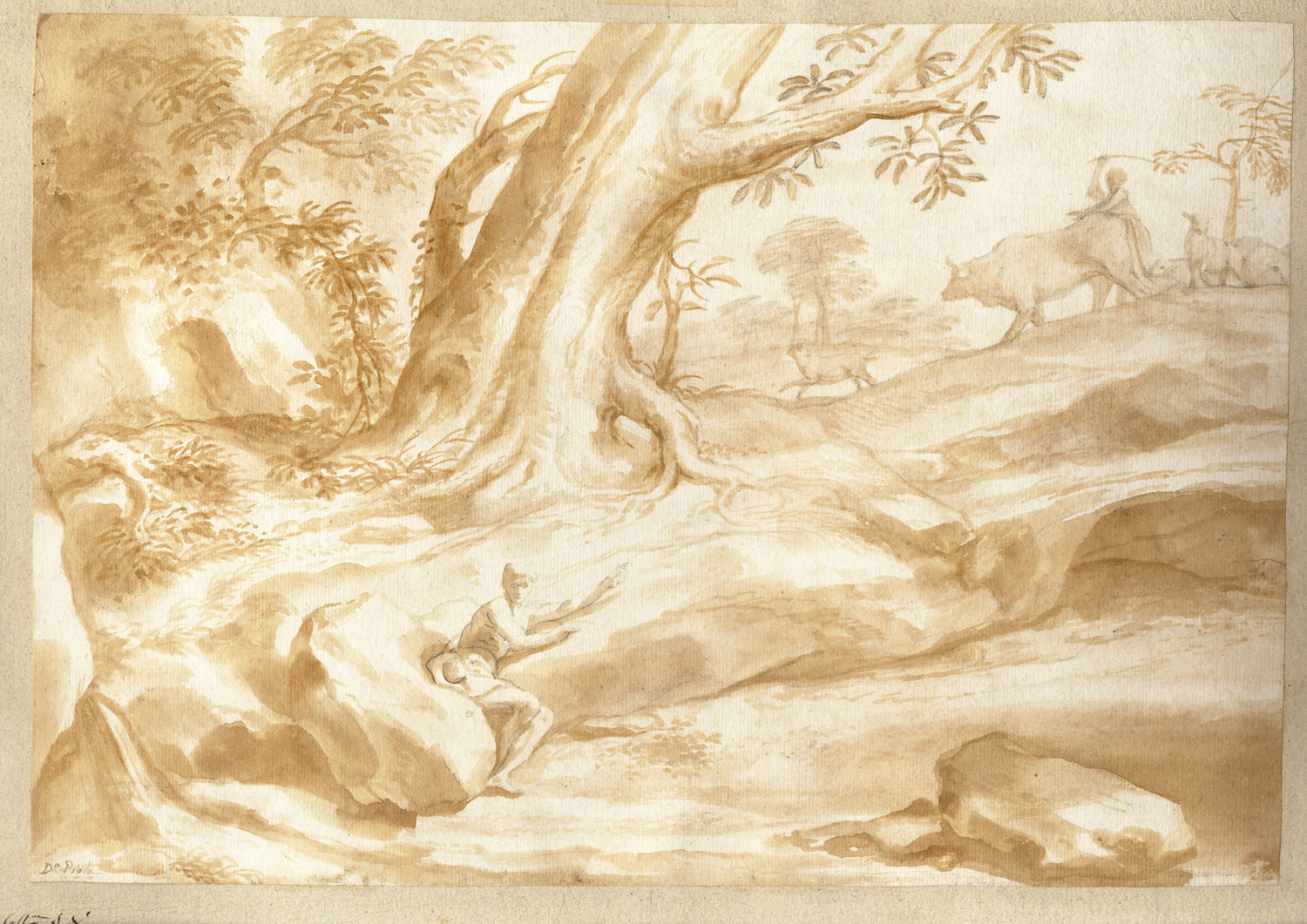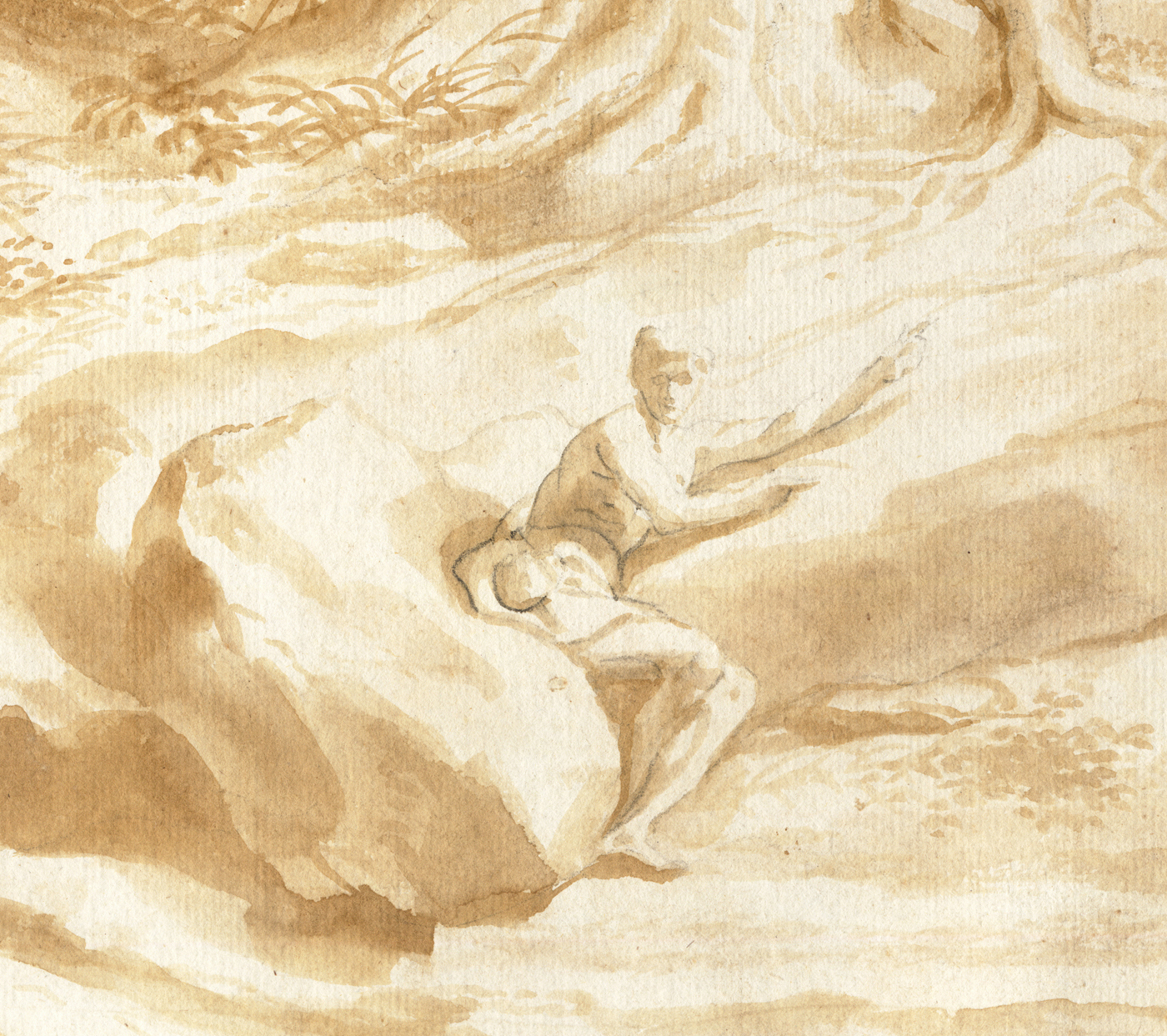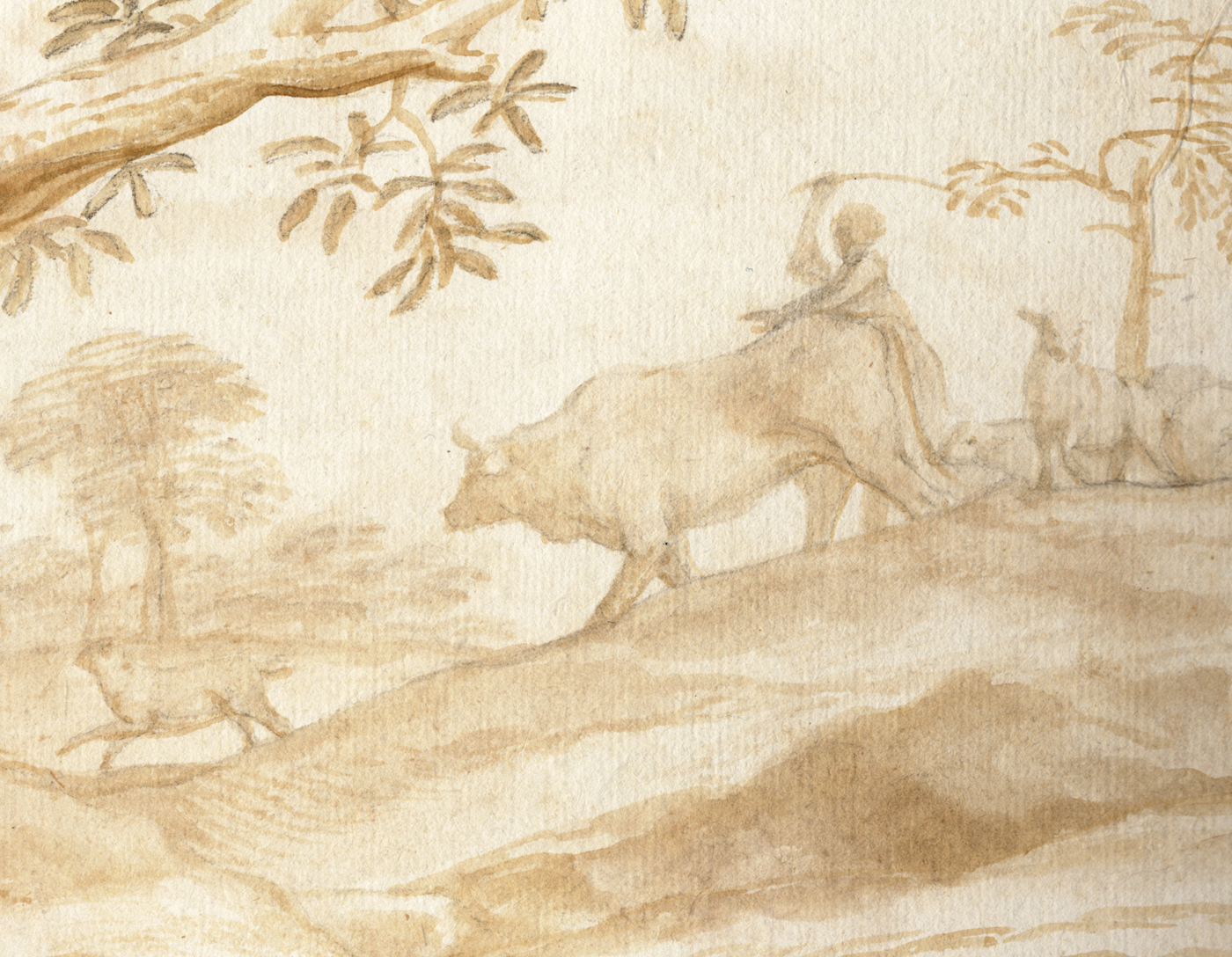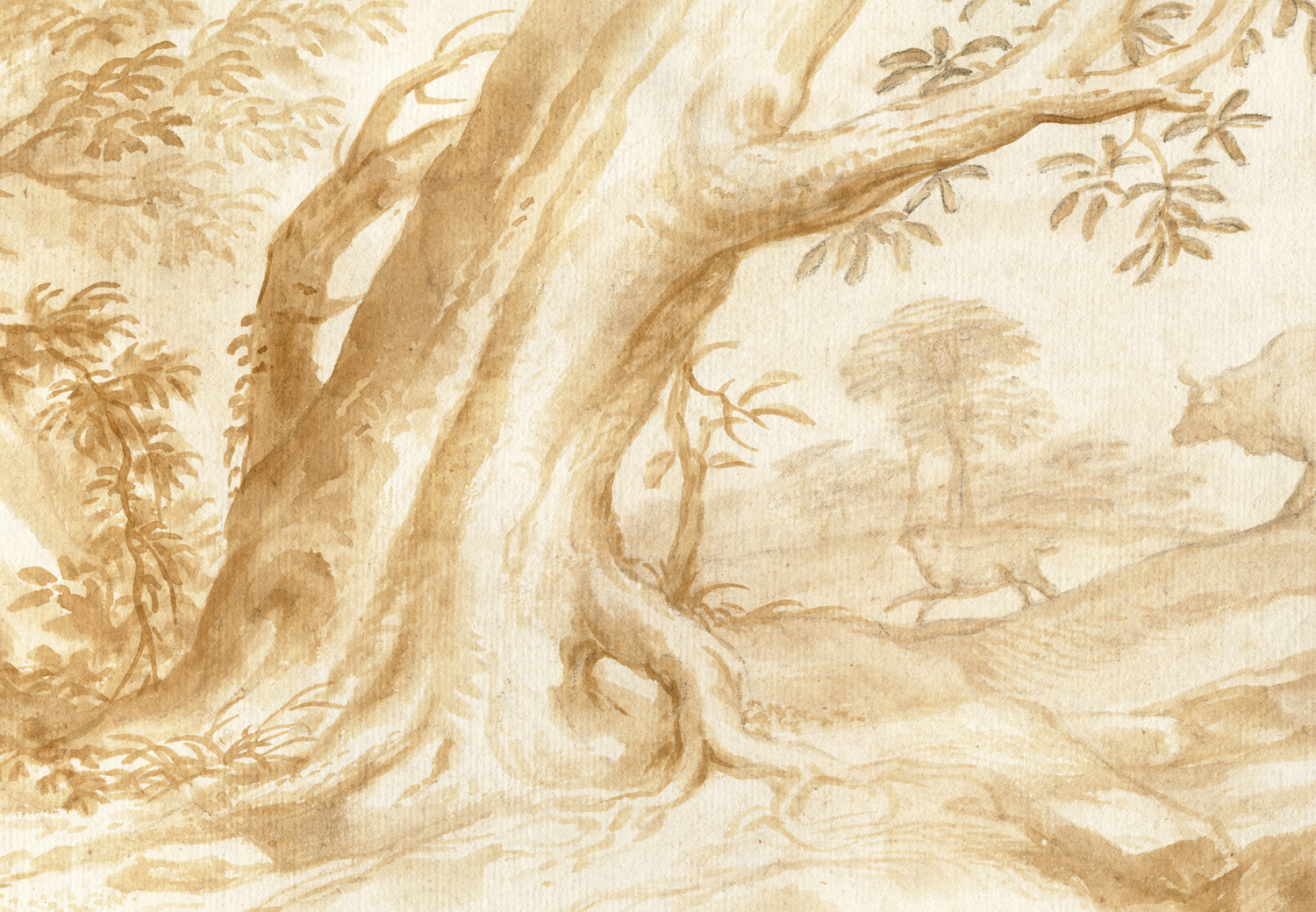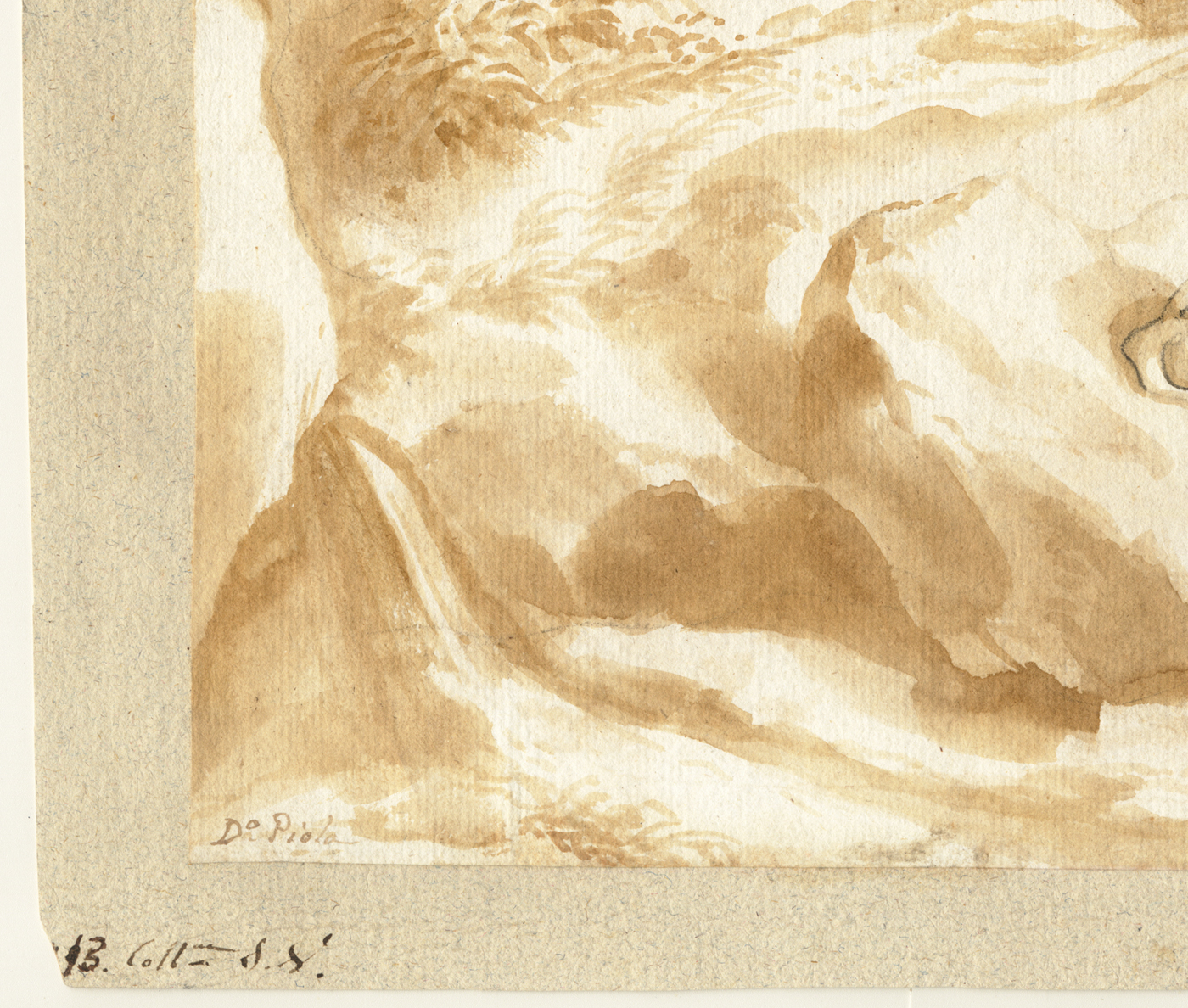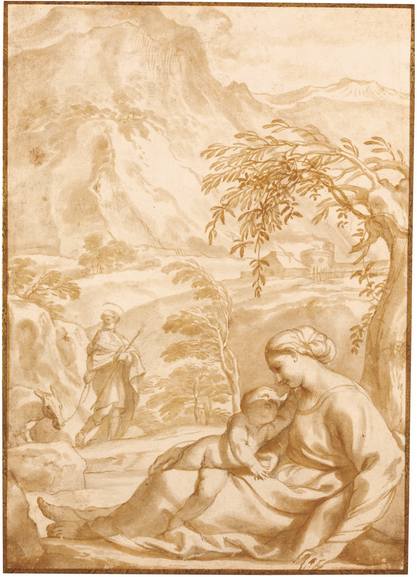DOMENICO PIOLA (Genoa 1627 – 1703 Genoa)
Domenico Piola (Genoa 1627 – 1703 Genoa)
A Landscape with a Shepherd Seated near a Large Tree
Brown wash, over black chalk, 289 x 416 mm (11.4 x 16.4 inch)
Inscribed ‘Do Piola’ (pen and brown ink, lower left)
Provenance
~ Santo Varni (1807–1885), Genoa (Lugt 3531), with associated inscription ‘13. Colln S.V.’ (pen and brown ink, on a sheet onto which the drawing is laid down)
~ Eugene Susini (1900–1982)
~ Anonymous sale, Christie’s, London, 18 April 1989, lot 28, repr.
~ With Kate de Rothschild
~ Private collection, Paris, until 2015
***
During the second half of the seventeenth century, much of the enormous demand for the frescoed decoration of the sumptuous palaces that were still being erected by Genoa’s wealthy aristocracy was satisfied by the very large, highly organised, and exceedingly busy workshop of Domenico Piola and his son-in-law Gregorio de’Ferrari, the ‘Casa Piola’.1 A pupil of his brother Pellegro, Domenico Piola studied the works of Castiglione and Valerio Castello as well as those of Rubens and Van Dyck, developing a spirited Baroque style of decoration that combines painting and stucco, and in which large numbers of gracefully posed figures are integrated into elaborate feigned architectural settings.
Domenico executed numerous preparatory drawings in connection with each of the projects he undertook.2 Many sheets by artists associated with the ‘Casa Piola’ are preserved in the museums of Genoa and Stuttgart, and further fine examples are preserved in the print rooms of leading museums all over the world. The holdings of the Casa Piola were saved from oblivion by the Genoese sculptor Santo Varni (1807–1885), who realised the importance of the drawings.3 Varni also owned the present drawing.
This large and attractive drawing is executed in Piola’s typical technique of brown wash applied with the brush, over a sketch in black chalk. The concentration on the landscape is more exceptional in his known oeuvre, where the human figure usually takes precedence. In this sheet however, the huge tree with its massive branches is the central element of the composition, with the shepherd resting idylically at its foot, and a cowherd at the top right. The sensitive handling of the landscape features can for instance be compared to Piola’s Rest on the Flight to Egypt (fig.).4
SOLD
1. For the artist, see: Ezia Gavazza and Giovanna Rotondi Terminiello (eds.), Genova nell’età barocca, exh. cat. Genoa (Galleria di Palazzo Reale) 1992, pp. 230-42.
2. For Piola’s drawings, see: T. Clifford, 'Some Italian drawings in the Musée des Arts Décoratifs, Paris', Apollo 159 (January 2004), pp. 3-13 and P. Boccardo and M. Priarone, Domenico Piola (1627-1703): progetti per le arti, Genoa 2006.
3. See C. Cavelli, 'Il « museo » dello scultore Santo Varni : vidence e vicissitudini testamentarie. Le opere acquistate dal Commune di Genova', Bolletino dei Musei Civici Genovesi, XI, 1989, n° 32-34, pp. 55-75 and P. Boccardo, I grandi disegni italiani del Gabinetto Disegni e Stampe di Palazzo Rossi a Genova, Milan 1999, pp. 88-90.
4. Brown wash over black chalk, 391 x 280 mm; ‘Old Master & British Drawings including French Masterworks from the Dormeuil Collection’, Sotheby’s, London, 3 July 2013, lot 45, repr.
